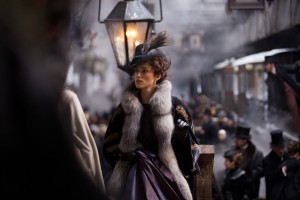Just watched The Hobbit/Battle of Five armies, and have fairly mixed feelings. On the one hand it’s a stunning technical and visual achievement, and a number of actors put on excellent performances, but on the other it’s let down by what I feel sure is a flawed screenplay.
I can’t yet put my finger exactly on what I find weak, but part of it is that the story doesn’t know what it’s trying to achieve. Tolkien, I believe, always wanted to explore the boundaries between the known and the safe on one hand, and the unknown, wild, and dangerous on the other. From the very earliest stories he wrote – I guess Tuor and His Coming to Gondolin and Earendil the Mariner, he wrote stories about ordinary characters encountering the extraordinary.
To a certain extent Jackson achieves this – Freeman plays an excellent Bilbo, thrust into a tale of dragons and elves and orcs, and yet in this, the third of an overly-stretched trilogy, Jackson seems to lose his way. It feels as if he’s trying to cram in every last CGI technique that he has left to him before he leaves the world of Middle Earth forever, and so rather than narrative arc or character development we’re presented with a never ending series of over-the-top battles. Bats swarm in the sky, man-bears jump from eagles, Elves defy the laws of physics, every warrior throws himself at his foe with no sense of self protection, huge set piece battles are frequently interrupted with individual interactions, while one assumes the armies in the background simply take a breather and wait for the main action to be resumed.
Bard alternates between acting as an excellent general and abandoning his post to chase down his children. We’re warned in dire tones of a ‘second army’ emerging from Gundabad, but they never really seem to show up.
Frankly, the whole thing leaves me longing for the Peter Jackson who created The Fellowship of the Ring. That movie also had its share of spectacle – Gandalf’s battle with the Balrog, and the battle of Dagorlad in the introduction, for example, but the characters and the source material were treated with more respect.
Perhaps the fundamental difference is this. In Fellowship, the spectacle served the narrative, but in Five Armies, the spectacle, the CGI, the endless fights, became an end in itself. In an era when computers allow us to portray pretty much anything we can dream up, the question for any movie maker becomes not what can we do, but what should we do?
Or to put it more simply – just because you can, doesn’t mean you should. I’m left at the end of the movie hugely impressed with New Line Cinema’s props, casting, sound recording, scoring and visual effects, but uncertain as to what story they were actually trying to tell.
